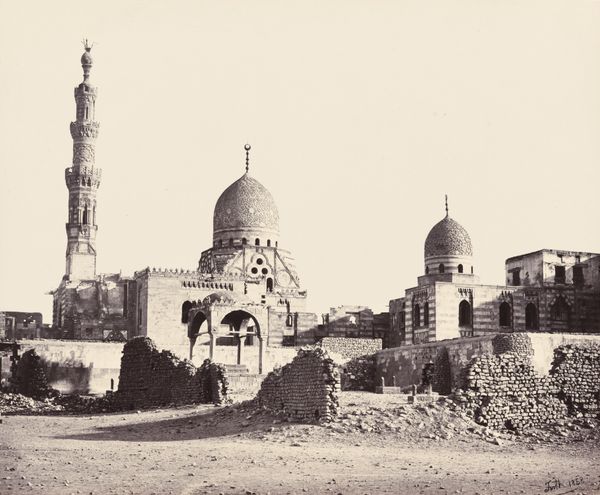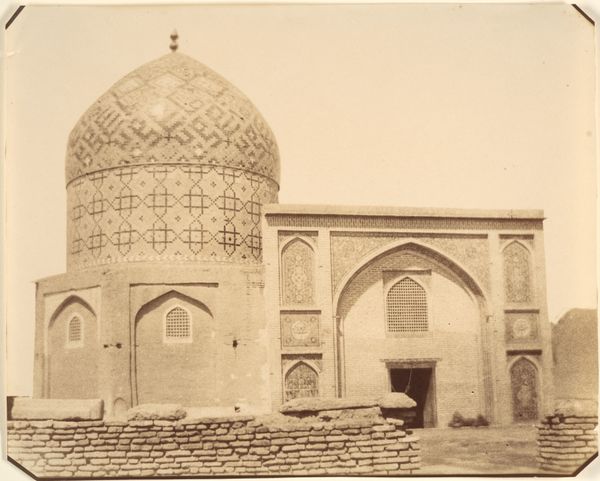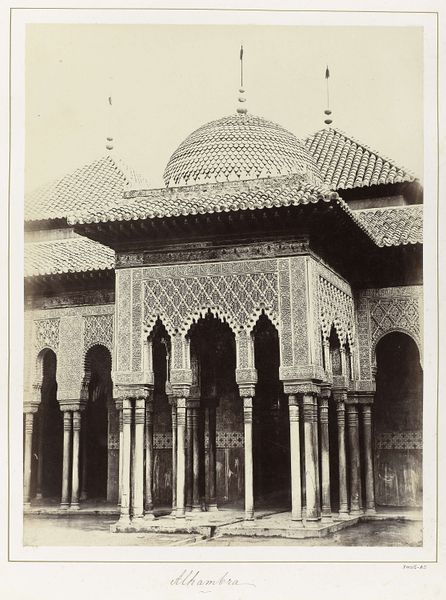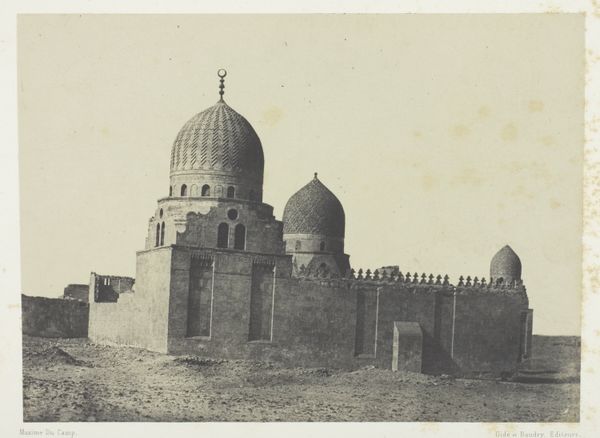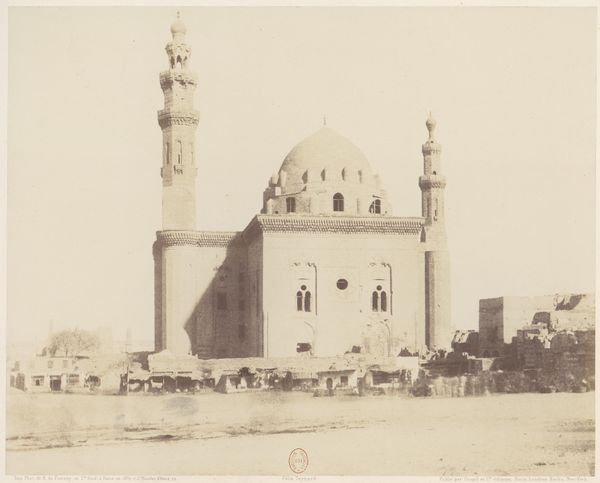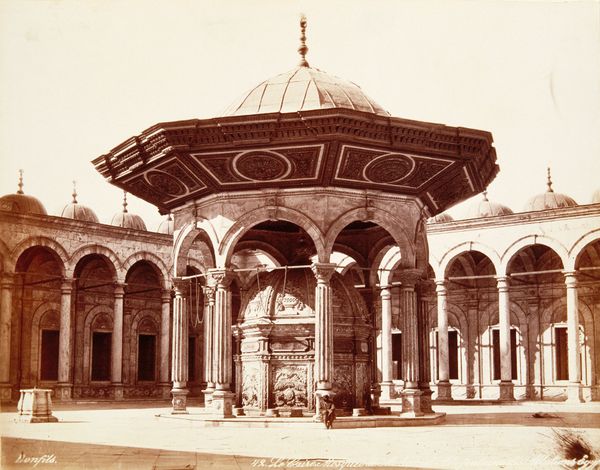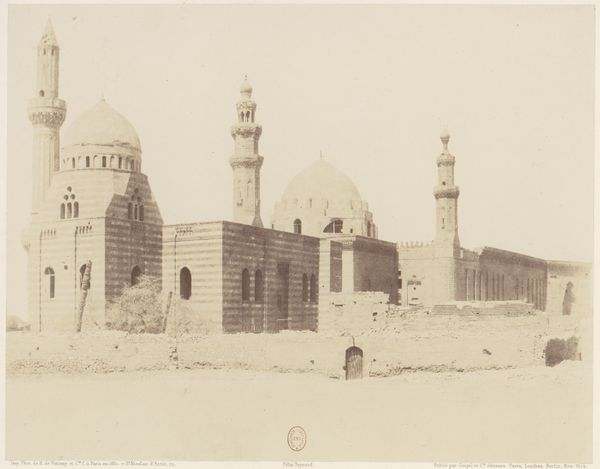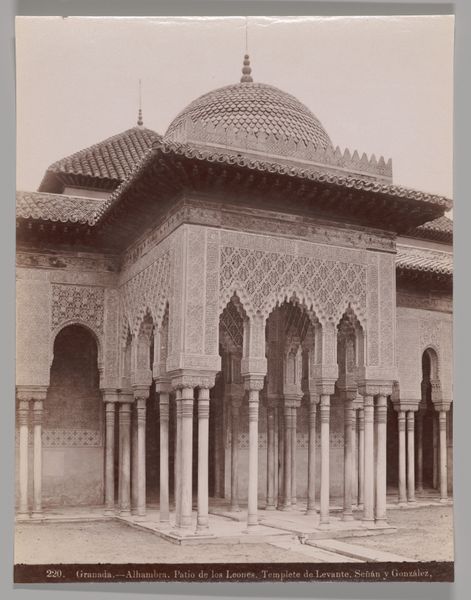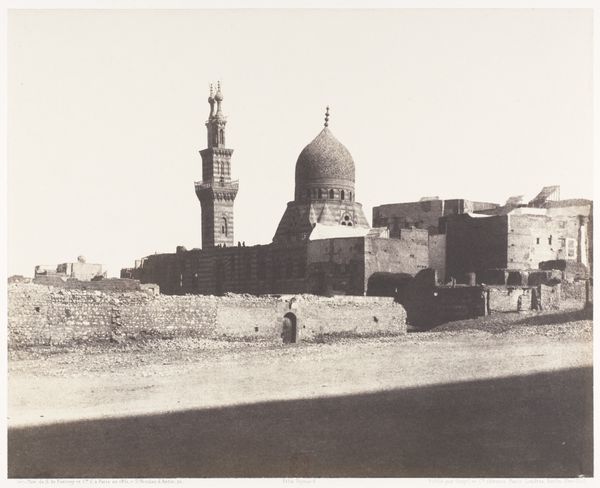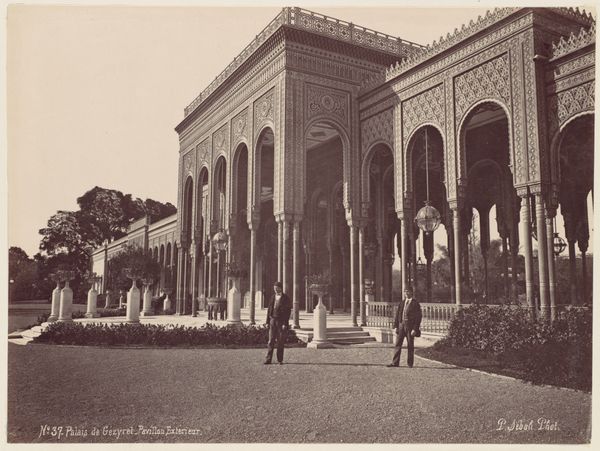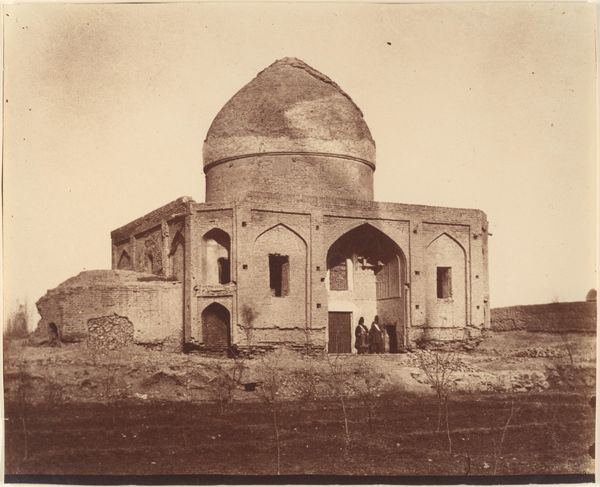
albumen-print, photography, albumen-print, architecture
#
albumen-print
#
historic architecture
#
street-photography
#
traditional architecture
#
photography
#
historical photography
#
city scape
#
orientalism
#
street photography
#
19th century
#
cityscape
#
islamic-art
#
albumen-print
#
architecture
#
historical building
Dimensions: 10 1/8 x 7 13/16 in. (25.72 x 19.84 cm) (image)14 x 11 in. (35.56 x 27.94 cm) (mount)
Copyright: Public Domain
Editor: So, here we have "Mosquée de Kaid Bey," a 19th-century albumen print by Abdullah Frères. It depicts the mosque in a very direct, almost documentary style. The detail in the stonework is amazing, but I feel a sense of detachment because of the muted sepia tones. What stands out to you in this piece? Curator: The albumen print, as a medium, places this work squarely within the context of 19th-century Orientalism. It was a time when the West was actively constructing its image of the "East." This image, with its focus on architectural grandeur and figures seemingly incidental to the scene, is doing ideological work. Who is this image *for,* and what is it meant to convey about power and access? Editor: That's a fascinating point. I hadn't considered the Western gaze so explicitly. The people seem dwarfed by the mosque, like set dressing. Is that part of the Orientalist perspective? Curator: Precisely. Consider how the figures are posed and framed. Are they active participants, or are they there to emphasize the perceived timelessness and exoticism of the scene for a European audience? Who is given agency, and who is objectified? Also, what does the lack of color do to the narrative, if anything? Editor: I see what you mean. By stripping away color, it becomes less about the vibrant, lived reality and more about a romanticized version of history. It really forces me to reconsider my initial impression. Curator: Absolutely. It invites us to question the power dynamics inherent in image-making and the role of photography in shaping perceptions of cultural identity and difference. How does photography reproduce colonial modes of thinking? Editor: This conversation has made me realize that this photograph isn't just a historical record; it’s a cultural artifact with its own biases and agenda. Thanks for unpacking that for me! Curator: And thank you for your insights. It’s through such dialogues that we can deconstruct these historical representations and work toward a more nuanced understanding.
Comments
No comments
Be the first to comment and join the conversation on the ultimate creative platform.
